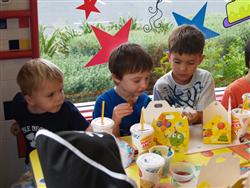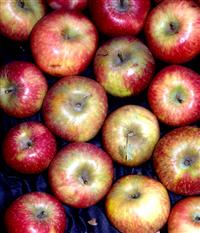Learn about Healthy Eating for Children.
What should Children eat?
 Children s nutrition should be a holistic approach to the eating patterns and nutritional requirements of those planning to have children, pregnant and post-partum women, and babies as they grow and develop into toddlers, children and later adolescents.
Children s nutrition should be a holistic approach to the eating patterns and nutritional requirements of those planning to have children, pregnant and post-partum women, and babies as they grow and develop into toddlers, children and later adolescents.
Today there are a variety of ways to ensure adequate nutrition for all members of the family. We can take supplements, purchase pre-prepared meals, we have access to seasonal fruits and vegetables all year round due to importing, freezing and canning and we have a variety of fortified foods readily available in most countries around the world.
Along with our increasing understanding of the macronutrients – fats, carbohydrates and protein and the assortment of essential micro-nutrients – vitamins and minerals one would expect that the human population as a whole would be experiencing a period of enhanced nutrition with resultant improvement in overall health and wellbeing. And yet, it is a well-known and established fact that nutrient diseases are increasing at an alarming rate in most areas around the globe. Worse still, our children are also suffering these conditions. Type II diabetes, obesity, heart disease and some forms of cancer are all examples of serious, life-limiting illnesses that often are, at least in part, caused by poor diet.
COURSE STRUCTURE
There are 10 lessons in this module as follows:
 Introduction to Child Nutrition
Introduction to Child Nutrition- Nutrition for Pre-Pregnancy
- Nutrition in Pregnancy
- Nutrition in Infants
- Nutrition in Childhood
- Nutritional Concerns
- Healthy Eating Behaviours
- Issues in Child Nutrition
- Childhood Obesity
- Diet Plans
AIMS
- Discuss the nature and scope of developing nutrition for children according to their backgrounds and needs.
- Explain the various nutritional needs of the mother and father before pregnancy .
- Explain the various nutritional needs of the mother and child during pregnancy.
- Explain various nutritional needs of infants from birth to age two.
- Explain various nutritional aspects of growing children addressing various issues and concerns.
- Identify concerns in the diets of children and adolescents and overcoming them.
- Lists ways to encourage healthy eating behaviour in children.
- Explain some of the common issues such as food sensitivities in childhood nutrition.
- Explain causes and guidelines to overcoming childhood obesity.
- Develop a list diet outlines for healthy children and special diet plans for children with special nutritional needs.
Parents, Teachers, Child Care Staff and Others have a Huge Impact
The time from birth to adulthood is one of growth, development, maturation and activity. Nutritional needs of children vary with their age, activity levels, health status, physical size and current rate of growth. Different processes require different nutrients, omega-3 fatty acids and protein are crucial for brain development in babies and toddlers, iron is particularly important when girls commence their menstrual cycle and energy needs will be greater during periods of rapid growth.

Nutritional habits, once formed, can be hard to break. A child who develops a sweet tooth and dislike for vegetables will find it much harder to maintain a healthy diet through their later life than a child raised with a balanced diet of fresh fruit, vegetables, grains, meat and dairy. The fact that a baby or toddler rejects a food on the first few occasions it is served does not necessarily indicate a dislike for the food, but more commonly a fear of new foods, or a confusion over the unfamiliarity of the new item.
The role of parents and caregivers can not be understated in children’s nutrition. Children learn from observation and when very young have no choice but to eat what is provided to them.
COURSE STRUCTURE
1. Introduction to Child Nutrition
- Scope, Nature and History of Nutrition
- Affect of Culture and Family Background on Nutrition
- Importance of Nutrition in Early Childhood
- Basic Nutrients needed in a Childs Diet
- Key things to Remember about a Childs Diet
- Nutrition Tips for Children
2. Nutrition for Pre-Pregnancy
- Pre Conception Diet -Maternal Weight, Maternal Nutrient Status
- Paternal Health and Nutrition
- Affect of Nutrition of Parents at Conception
- Making Diet Changes Pre Conception
3. Nutrition in Pregnancy
- Early Pregnancy and Morning Sickness
- Tips to Help with Pregnancy Nausea
- Nutrition through Pregnancy -RDI
- Caloric and Fluid Intake through Pregnancy
- Calorie Demands for a Pregnant Woman
- Foods to Avoid While Pregnant
- Hypervitaminosis
- Pregnancy Complications that Relate to Nutrition (Neural Tube Defect, Morning Sickness,
- Constipation, Gastrointestinal diabetes, Hypertension, Fetal Alcohol Syndrome
4. Nutrition in Infants
- Breastfeeding
- Formula Feeding
- Feeding for the first six months
- Starting on Solid Foods
- Adequate Vitamin C and Iron Intake in first year
- Progressing with Solid Foods: protein, dairy, finger foods, etc
- Nutrition for Toddlers
- Snack Packs, Small Meals, Meal Alternatives, Being creative, etc
- Allergens
- Weaning
5. Nutrition in Childhood
- Caloric Intake
- Mineral Intake
- Vitamin Intake
- Encouraging Good Eating Habits
- Breakfast
- Morning and Afternoon Snacks
- Packed Lunches
- Eating Habits
- Puberty
6. Nutritional Concerns
- Scope and Nature of Nutritional Health for Children
- Healthy Snacks and Re-hydration
- Underweight
- Malnutrition
- Anaemia or Iron Deficiency
- Dental Care
- Eating Disorders : Anorexia, Bulimia, Binge Eating
- Fast Food and Junk Food
7. Healthy Eating Behaviours
- Influencing Children s Eating
- Teaching Healthy Eating to Children
- Health Snack Ideas
- Childhood Food Sensitivities
- Food Intolerance
- Food Allergies
- Relevant Research
- Food and Autism
- Food and Child Behaviour Problems
- Diagnosing Sensitivities : skin test, blood test, diet
8. Issues in Child Nutrition
- PBL Project: Develop a presentation to be given to a group of families, where a child has been recently diagnosed with an illness/disease of your choice. The purpose of the presentation is to inform families and sufferers about the disease, and to provide clear, simple guidelines for dietary intervention to improve health, correct the condition or prevent deterioration in health.
9. Childhood Obesity
- Cause of Childhood Obesity
- What is Unhealthy about Childhood Obesity?
- Guidelines for Child Weight Loss
10. Diet Plans
- Special Nutritional Needs
- Childhood Diabetes
- Vegetarian and Vegan Diets
- Normal Eating Habits for Children
LEARN TO UNDERSTAND HOW WHAT YOU EAT CAN AFFECT A CHILD'S HEALTH
Different children can react in different ways to food. Some conditions such as food allergies are more common today; or at least being detected more. Such conditions may be caused by poor diet; but they can also be caused at least in part by other things. You will come to understand that throughout this course.
Skin and sinus conditions are two particularly common responses to food.
Eczema is a non contagious inflammation of the skin that causes the skin to become red scaly or blistered. Eczema can affect people at different stages in their lifetime while it is particularly common in childhood where it tends to appear in babies who are between two months and six months old and disappears when a child is around 6 years old. The exact cause of eczema is unknown although research has identified a number of factors linked to the disease including stress, family history, tobacco smoke, washing powders and liquids and allergens such as house dust mites, molds and tree and plant pollen.
Medical Diagnosis and Treatment
Diagnosis of eczema is based upon a patient’s symptoms and history of these symptoms, on whether they have a family history of eczema and also by a doctor inspecting the skin noting the type of rash and its distribution.
Treatment of eczema will involve the prescription of an emollient (cream) to moisturize the skin with or without the additional use of a topical corticosteroid to reduce any skin inflammation. Skin prick testing may also be used to check for triggers such as foods, chemicals and airborne particles which can then be avoided.
Dietary Management
Eczema is fairly commonly associated with food sensitivity and food sensitivity is thought to affect between 1 in 10 and 1 in 4 of all eczema sufferers. Foods particularly associated with eczema include wheat, eggs, cow’s milk and additives such as tyramine as well as salicylate - a naturally occurring food chemical in foods such as fruit, vegetables, herbs and seeds. Reactions to food can occur immediately after eating a trigger food or more controversially occur between 6 and 24 hours after eating a trigger food. Where foods are thought to trigger eczema it is important that people consult their doctor for a confirmed diagnosis. Keeping a food/ symptom chart may then help to identify any triggering foods while in some cases an elimination diet may be useful where it is carried out under the supervision of an allergy centre professional.
WHO CAN THIS COURSE BENEFIT?
- Parents
- Health industry professiuonals
- Food industry employees
- Food producers and manufacturers
- Retail and service staff in the food industry